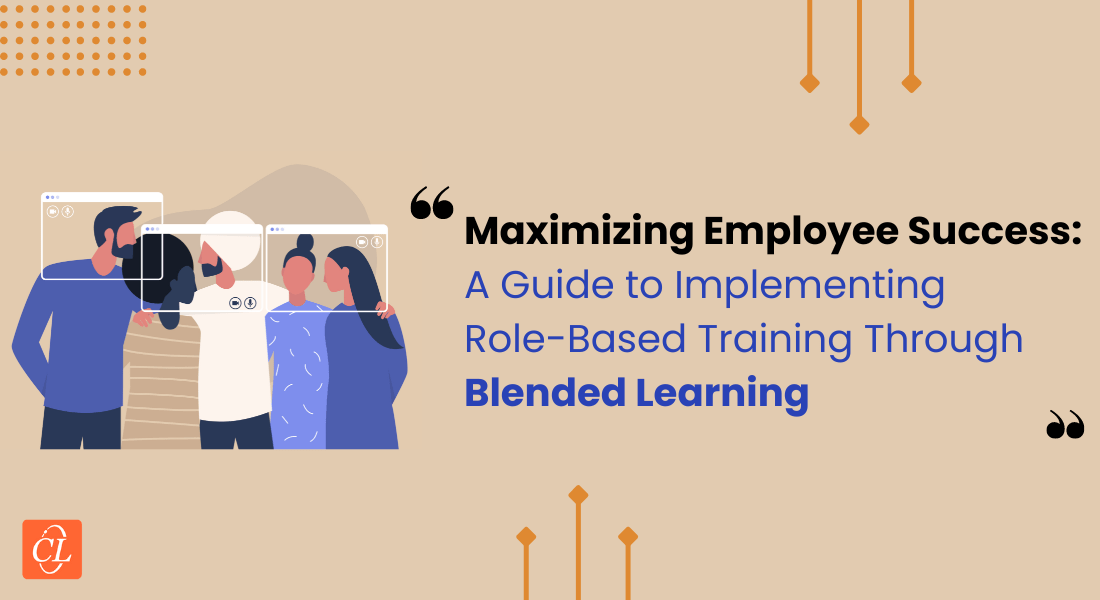The Future of eLearning – Top Trends to Watch Out For in 2022
The internet has transformed the corporate training industry almost beyond recognition. Here are the top eLearning trends to look out for in 2022.

Even before offices closed, in 2020, due to the pandemic, the eLearning industry was worth $18.6 billion , and it was booming in the global market. Now with eLearning cutting through the noise, COVID-19 has simply accelerated this industry’s growth and it has become increasingly prevalent in businesses around the world.
Today, the internet has millions of sites and applications filled with educational content for employees of all levels. You can find online courses offered by some of the best institutions and organizations operating in different niches and industries.
Popular eLearning Trends to Watch Out For in 2022
The Top 7 eLearning Trends are:
- Microlearning
- Gamification
- Augmented Reality and Virtual Reality
- Personalized Learning
- Mobile Learning
- Artificial Intelligence
- Communication Tools
Digital platforms such as Coursera, Canvas Network, LinkedIn, Udemy, and edX are facilitating interactive and entertaining learning online. However, if you’re a Learning and Development (L&D) specialist, you need to keep up with the latest eLearning trends in the market to ensure:
- Modern learners’ preferences are met.
- Employee learning is engaging and memorable.
- The bottom line improves through enhanced training outcomes.
- The training reaches remote learners and is easily understood.
- Employees are regularly upskilled and reskilled.
In this blog, we’ll briefly talk about the importance of eLearning in the digital age and share the top trends to watch out for in 2022.
Key Considerations for High-Impact eLearning
Importance of eLearning in the Digital Age
In case you’re unfamiliar with the concept, electronic learning (or eLearning) refers to learning with the aid of online digital resources. This unconventional approach offers learners access to training materials from anywhere, anytime, and at one’s convenience.
Following the success of remote and hybrid models, eLearning has become even more popular due to technologies supporting remote workspaces as well as cloud solutions. As a result, you need to get up to speed with its benefits and its relevance , and look at what you can achieve through eLearning:
A Team of Upskilled Employees
By using eLearning solutions, employees can pick up new skills to improve their efficiency, productivity, and the outcomes of their responsibilities. For instance, marketers can learn how to use new digital marketing tools. Similarly, managers can boost their communication skills and emotional intelligence.
New Domains
Since the pandemic began, many businesses have expanded their domain to reach emerging markets by creating new products and services. However, some don’t have the budget to hire and expand their offices to facilitate their facilitators and subject matter experts. This is where eLearning comes in. It helps employees master new skills at a low cost.
Quantifiable Impact on Every Aspect of Your Business
Compared to conventional training methods, one of the most important benefits of eLearning is quantification. It allows trainers to easily monitor the learners’ progress using predetermined and specific metrics, such as the time taken to complete a course and their test scores.
The Top 7 eLearning Trends to Consider in 2022
If you’re intrigued by the concept of eLearning, let’s look at the most important eLearning trends in 2022:
1. Microlearning
Microlearning has become an incredibly popular trend in the modern, fast-paced era that we live in. At its core, instead of requiring learners to spend hours on training, microlearning allows them to develop extensive skills with need-to-know information in short bite-sized learning nuggets. This enables gradual learning where trainers use short videos, infographics, and interactive games, compiled in a modular structure to explain critical concepts as well as test learners’’ retention and comprehension.
2. Gamification
Gamification, in corporate training, refers to the process of transforming conventional training components into gamified eLearning courses. It aims to increase learner participation and knowledge retention by literally creating a game using the learning material.
For decades, video games have been an extremely popular and addictive form of entertainment, with gamers spending long hours playing on their consoles, PCs, and mobile devices. Due to this norm, many eLearning sites are adapting their courses with game mechanics to encourage learner participation and interaction.
Apart from the cognitive benefits, gamification also helps provide businesses with insightful data regarding their employees’ abilities.
3. Augmented Reality and Virtual Reality
Since 2017, augmented reality (AR) and virtual reality (VR) have grown exponentially, with companies like Facebook, Google, Microsoft, Apple, and Samsung developing game-changing AR and VR gadgets and platforms.
The ability of AR and VR to immerse learners in alternative realities and help transform their learning experiences is not only revolutionary but also avant-garde. Learners can participate in hands-on eLearning courses where they find themselves working with virtual objects and grasping concepts in low risk simulated environments. These innovative technologies can enhance scientific and technical job skills and performance, medical simulations, including virtual surgeries, and the manufacturing industry’s research and development processes and outcomes.
VR enables users to create avatars and develop virtual meeting rooms where learners can interact with instructors from anywhere, and in real-time. This immersive technology increases learners’ flexibility, access to information, and communication skills.
AR, in corporate training, offers learners flexibility as it provides better access to relevant information and enables real-time connections with other learners and instructors.
4. Personalized Learning
Personalized learning refers to the integration of technology and learning. It enables employees to develop skills through participating in customized projects instead of generic curriculums. Put in a nutshell, trainers can customize the courses according to their employee’s areas of expertise, strengths, and weaknesses.
This customization is made possible by assessing learners’ needs based on their future roles. Trainers predetermine learning indicators and outcomes by incorporating the skills their employees need to imbibe and setting corresponding goals and benchmarks with smart incentives for their learners to achieve.
One of the biggest reasons personalized learning is so popular is its active learning model. Moreover, learners who go for personalized courses are self-directed, goal-oriented, and are adding new learning to their knowledge banks.
5. Mobile Learning
We live in an age when mobile devices have become an essential part of our daily lives. We use them for entertainment, to communicate with our peers, and to access our favorite applications. Therefore, it is inevitable that eLearning needs to incorporate mobile-friendly technologies.
With the emergence of on-the-go technologies including cloud computing, mobile learning is rapidly picking up the pace by providing educational content on smartphones, netbooks, and tablets. Put simply, mobile learning aims to eradicate the concept of in-person training that’s defined by learner attendance, testing, and participation.
6. Artificial Intelligence
It’s safe to say that technologies such as artificial intelligence and machine learning are no longer considered radically new. AI has become an essential part of our lives, whether through driverless vehicles, Netflix’s algorithms, Apple’s Siri, or text based chatbots. With so many real-world applications, virtual reality in the eLearning industry is finally catching on.
Just like Netflix, many eLearning courses and platforms now offer adaptive learning. By using powerful algorithms, they help create learning paths and profiles to enable personalized learning experiences. Personalized learning can speed up the learning process by providing each employee with customized learning material based on their skills and knowledge gaps, preferences, and pace of learning.
So, no matter where you are on your learning and development journey, AI can help you create the most relevant, engaging courses and training material for upskilling and reskilling your employees.
7. Communication Tools
Communication is what makes the difference between business as usual and business in the new normal. A large number of companies have adopted diverse tools, channels, and asynchronous communication models in this new era. As a result, modern learning management systems (LMSs) need to be integrated with communication tools to improve employees’ learning journeys.
A couple of the core purposes of these communication tools are to facilitate the impartation of knowledge and boost the interaction between learners and instructors. To integrate communication tools with your eLearning courses, you can go for an LMS or use easily available solutions such as emails, social media, and video conferencing.
A few popular communication tools and software include ProofHub, Dropbox, Flowdock, Zoom Meetings, and GoToMeeting.
Parting Thoughts
And there you have it – the top 7 eLearning trends to consider in 2022. Now, you can proactively plan your eLearning journey and choose the best platform and courses to improve your skills. Whether you’re an employee looking to take on more responsibilities or a student looking to land their first job, eLearning is the future of education and training.
However, you must be careful before choosing eLearning platforms, as they don’t all offer the same value. So, you need to do your homework by exploring multiple demos before investing in an eLearning course. Discover more insights from this amazing eBook – eLearning Trends 2022 – The View from the Trenches. Download your copy now.





